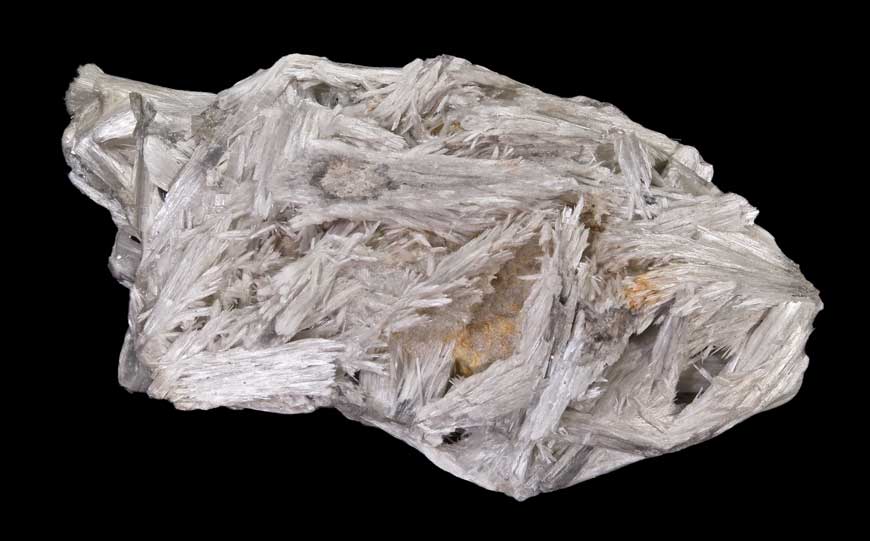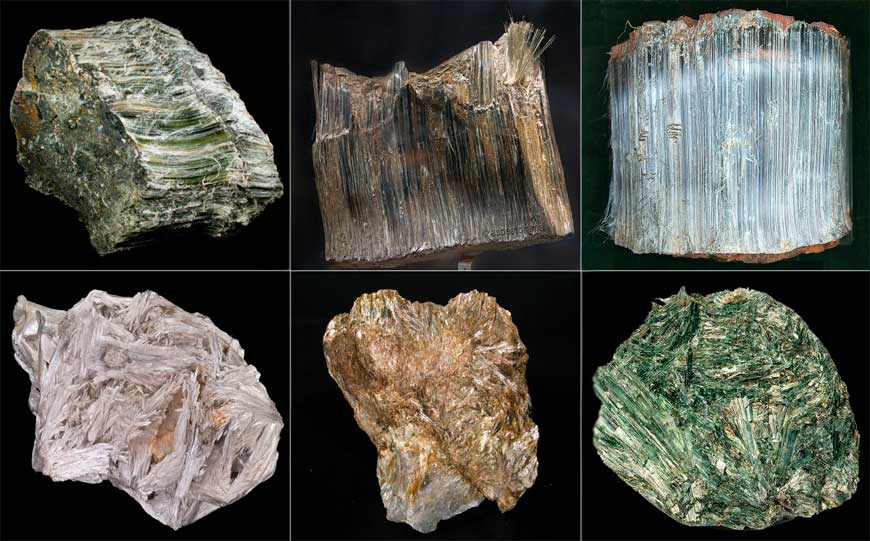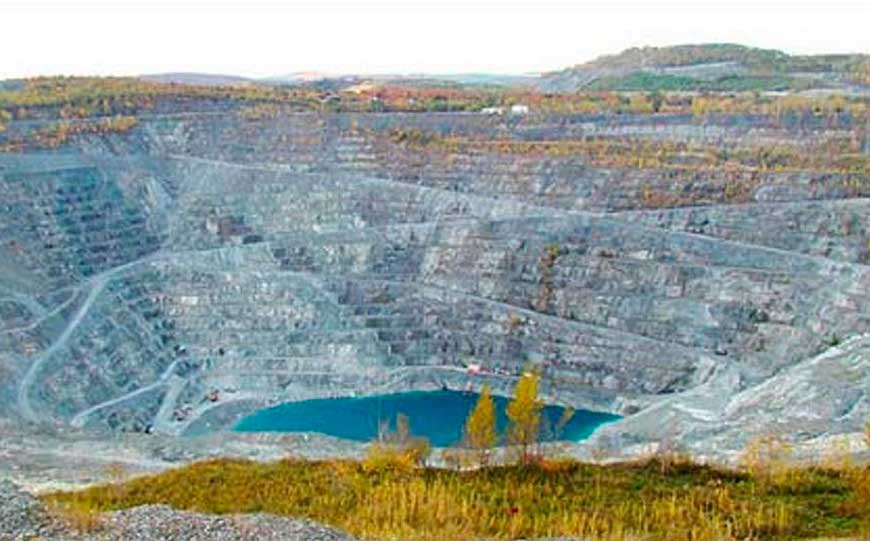
Did you know that asbestos kills around 5000 people every year?
This number is even more shocking if you consider that this is more than the number of people who are killed as a result of road accidents!
Exposure to asbestos is very hazardous, as it can lead to various fatal diseases and conditions.
Whenever materials which contain asbestos are damaged or disturbed, the asbestos fibres become airborne.
The sad truth is, there’s still a lot of asbestos containing materials present around us in buildings which were either built or refurbished prior to the year 2000.
So the dangers are still very present.
Table of Contents
What is Asbestos?

Image credit: Wikipedia
Asbestos is a naturally occurring mineral which is found in rocks and soil, made up of flexible fibres.
They’re highly fire retardant, as well as resistant to electricity and corrosion.
For these reasons, asbestos was deemed to be ideal for various uses.
This includes acting as an insulator, or as an additive in various other materials such as cements, plastics, paper and cloths in order to make them stronger or fire resistant.
Types of Asbestos

Image credit: Asbestos Illness
There are six different types of asbestos, namely:
The first five are categorised as amphibole asbestos fibres since they all have a straight, jagged shape.
Chrysolite on the other hand is a serpentine asbestos as the fibres are curly in form.
It is important to point out that all types of asbestos are dangerous.
However some are considered to be more hazardous than others.
Amosite (also known as brown asbestos), and crocidolite (also referred to as blue asbestos) for example, have very strong, stiff fibres.
These are easily inhaled and can get lodged in the lungs where the human immune system is unable to break them down.
On the other hand, chrysolite (also known as white asbestos) is softer and more flexible, and so is considered slightly less dangerous than other types of asbestos.
Where Does Asbestos Originate?

Image credit: BBC
Historically asbestos comes from various countries from all around the world.
However the main exporters are China, Russia, Canada, Zimbabwe and Kazakhstan.
Back in the day, asbestos was mined throughout North America as well.
Asbestos can be found in large deposits
It can also be found as a contaminant in other minerals, such as vermiculite and talcum powder.
Why is Asbestos Dangerous?

Image credit: Pexels
Over the years, studies started to demonstrate that exposure to asbestos significantly increased the chances of being diagnosed with any one fo many asbestos related diseases several years later.
Indeed, scientific studies showed that asbestos exposure was linked to various serious and fatal diseases, including:
- Mesothelioma
- Asbestosis
- Pleuritis
- Pleural effusions
- Pleural plaques
- Diffuse pleural thickening
- Chronic Obstructive Pulmonary Disease
Sadly, such diseases rarely show signs of symptoms shortly after exposure.
Indeed, it can take decades for symptoms to start developing.
At the point when the diagnosis is made, there will be no way to reverse the damage and unfortunately it will more than likely be too late to do anything.
We shall be outlining key aspects relating to such diseases in more detail further below.
When is Asbestos Dangerous?
If asbestos containing materials are in a good condition, there is no significant immediate health risk.
The dangers will start to arise should such materials get damaged.
If there are scratches, dents, scrapes or some other form of damage, caused by drilling, cutting or breaking, there’s a high probability of asbestos fibres getting released into the atmosphere.
Asbestos fibres are microscopic and very thin, and as a result they’re easily inhaled.
They will not dissolve, but rather they will remain stuck in the lungs indefinitely.
Unfortunately, no amount of asbestos exposure can be considered safe.
The most serious effects arise following an exposure to an intense concentration of asbestos over a long period of time.
However even exposure for a relatively short period can lead to asbestos related diseases.
Asbestos fibres are microscopic, and so in many cases one will not even be aware that he or she has been exposed to asbestos.
If asbestos fibres are inhaled, they will accumulate in the body.
There is no way to reverse the serious damage that such fibres cause.
The most hazardous situation is when asbestos fibres become airborne, as in such a case they can easily be inhaled.
Hence it is critical to avoid disturbing or damaging any asbestos-containing materials.
Asbestos Related Diseases

Image credit: Pexels
Most patients who have been diagnosed as suffering from an asbestos-related disease are men who are in their 60s, or older.
In most cases, such patients used to work in a workplace where they were exposed to asbestos-containing materials.
As a result, such occupational exposure took place regularly when they were younger.
Indeed, asbestos-related diseases have a long latency period, often taking over 20 years to develop.
Workers who used to work in construction, mining, automotive repair, shipbuilding, renovation, demolition, military service and firefighting are among the most high-risk industries.
Moreover, even people who lived in close proximity to asbestos-contaminated mines or to processing facilities could have been considerably exposed to asbestos.
This is what is known as environmental exposure.
There are also various asbestos products which used to be manufactured back in the day.
Some examples include asbestos cement, vinyl asbestos tiles, roofing felt, asbestos reinforced plastics, asbestos adhesives and sealants.
While such products were discontinued following the ban of asbestos, they could still be present in buildings which are rather old.
The following are some of the asbestos related diseases that one could suffer from following exposure to asbestos.
Mesothelioma
Mesothelioma is a type of cancer which has been linked to asbestos exposure.
It affects the pleura, which is the lining of the lungs, as well as the lining which surrounds the peritoneum, which is the lower digestive tract.
In some cases it can also affect the heart.
The symptoms of mesothelioma will start to become more evident when tumors spread and grow to a point when they will start to press against the chest wall and the abdominal cavity.
Unfortunately, initial misdiagnosis is quite common.
Hence the importance of being aware of any possible exposure to asbestos in the past.
Imaging scans, biopsies and blood tests are often conducted.
Some common symptoms include a dry cough, shortness of breath, respiratory complications, chest or abdominal pain, fatigue and fever.
The embedded asbestos fibres will have damaged the mesothelial cells and lead to inflammation, which later on leads to mesothelioma.
Lung Cancer
Asbestos-related lung cancer will look just like lung cancer that has been caused from smoking or other causes.
Smoking will multiply the risk of lung cancer to asbestos sufferers.
Asbestos exposure causes six times more cases of lung cancer than mesothelioma cases, and hence it ends up claiming more lives than any of the other asbestos related diseases.
In this case the tumor is in the lung itself, not just in the lining of the lungs as with mesothelioma.
Common symptoms include chest pain, shortness of breath and coughing up blood.
Other symptoms include swelling of the face or neck, fatigue, loss of appetite, hoarseness and wheezing.
There are two forms of such cancer, namely the small cell and the non-small cell.
The prognosis and treatment will depend on the type as well as the stage of the cancer.
This cancer takes between 15 and 35 years to develop following the initial exposure.
Unfortunately more than half of lung cancer patients pass away within just one year from when the diagnosis is made.
Asbestosis
This is a serious condition whereby the lungs end up getting scarred due to regular, heavy exposure to asbestos fibres.
The spongy lung tissue ends up getting scarred.
Symptoms of asbestosis include progressive shortness of breath, a dry, persistent cough, chest pain, and a crackling sound in the lungs when breathing.
Other symptoms include difficulty swallowing, finger deformity, loss of weight, hypertension and swelling in the face or neck.
If it is very serious it can lead to death.
Asbestosis also increases the risk of one developing lung cancer.
Pleural Thickening
This is a serious problem which occurs as a result of heavy exposure to asbestos.
Over time the pleura, that is the lining of the lungs, will start to thicken and swell.
Over time, in the most serious cases of pleural thickening, the lung itself can start to be squeezed, leading to considerable shortness of breath and chest discomfort.
Conclusion
Asbestos exposure should not be taken lightly as it is very hazardous.
It is important to consult with a doctor should one be concerned about any symptoms or possible exposure to asbestos.
Great care should be taken to avoid being exposed to asbestos-containing materials, particularly if they are in a bad condition.
Seeking professional assistance from an asbestos specialist to ensure proper surveying, testing and safe removal is a must.